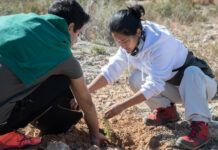Although he studied Audiovisual Communication, he has carved out a successful career specifically in the advertising industry. For him, the most important thing is to be able to “tell a story”, moving beyond the format and the product itself.
He recommends that students work hard, create their own personal projects – and promote them – and move out of their familiar surroundings. And to try their hand at the entrepreneurial side of the business, at least once.
David Navarro is living the American Dream in New York. This CEU graduate is Executive Creative Director for Ueno, right in the middle of SoHo.
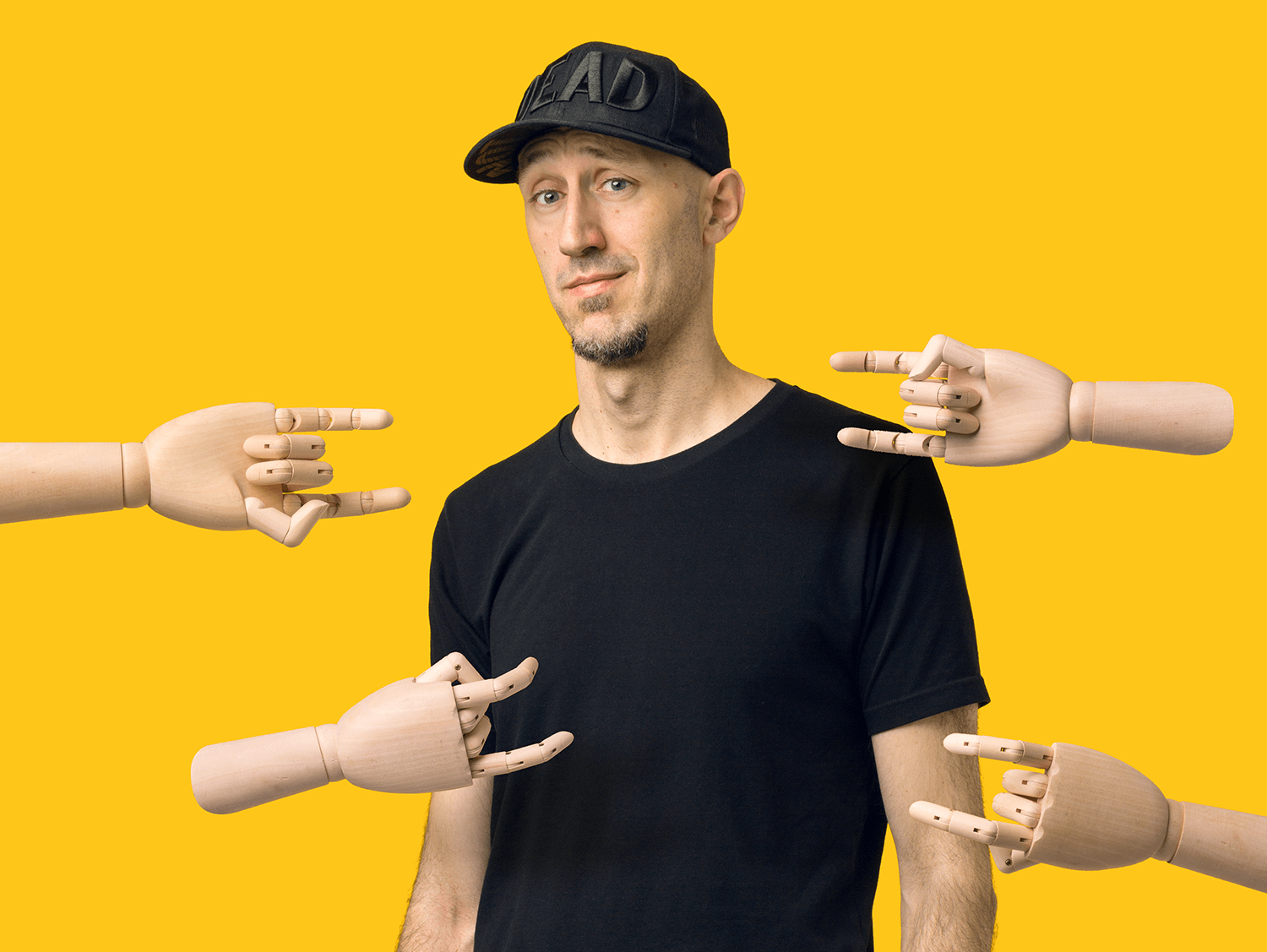
You’ve been Executive Creative Director at Ueno since July 2017. It’s still fresh for you. Tell us something about this agency.
Ueno is a digital agency. We work for clients such as Reuters, Facebook, Uber, Airbnb, Google, Lonely Planet and many others, creating digital products, strategy, branding and marketing.
It’s a young company, just four years old, with offices in four cities: San Francisco, the biggest office, New York, where I’m based, Los Angeles and Reykjavik, in Iceland. The team is diverse (more than twenty nationalities) but also compact, a little over fifty people (but growing rapidly) over the four offices. There’s a lot of talent and desire to become a leading agency in the interactive and design sector.
It must be a big challenge to work there.
It is. I joined the agency just eight months ago, feeling energized and enthusiastic about leading the creative side and shaping a young and gifted team at this office with my vision.
I’m very happy to have this challenge. It’s very rewarding to live in such a competitive environment as New York, which is also so rich with opportunities, and to be working at a company like Ueno, whose culture and client portfolio means that that you have to rise to this challenge and give it your best all the time.
‘IN Such a fertile city as NEW YORK YOUR OPPORTUNITIES FOR DEVELOPMENT MULTIPLY. IN THIS CONTEXT, A PERSON WITH TALENT IS BOUND TO SUCCEED.’
You’d worked in New York before, hadn’t you?
Yes, I’d always dreamed about having an “American adventure”. In the digital and design field, the USA is always at the forefront of what’s going on. Spain and Europe are great places to be, with a lot of great things, but I always thought that there was ever an opportunity to cross the pond and develop as a professional, I had to take it.
I’d already had an opportunity before I made this move, but, that’s right, two years ago, the conditions were just right for me to join one of the companies that I’d always been a big fan of, Stink Studios (formerly known as Stinkdigital).
And what’s it like living in the world’s capital?
Working in New York after working in Europe is a real experience. The city is full of activity and dynamism in a way that is both infectious and intimidating at the same time. As Europeans, we have a way of approaching life and work in a way that is bit more restrained. In New York, the pace doesn’t let up and it’s extremely competitive – and that takes some getting used to.
In my case, I wouldn’t say that my immersion in this place was easy. Stink is a demanding place and so in a way I had to force myself to adapt very quickly to be able to handle this culture that was different to what I was used to. Rather than being a professional challenge, it was a cultural one.
But the effort has been worth it. The city’s dynamism is contagious and pushes you along. It’s something I always say and it’s the biggest difference between Europe and Spain and the USA – the importance of the context. It’s not about the talent you have, but the context in which your talent develops. In such a fertile city as New York, with culture on every corner, hundreds of things to do, with people keeping up this fast pace, companies creating opportunities, the possibilities for your personal development multiply. In this context, people with talent are bound to succeed.
‘SPANISH PROFESSIONALS ARE MORE THAN QUALIFIED TO COMPETE EFFECTIVELY anywhere in the world, BUT WE HAVE TO OVERCOME A SERIES OF OBSTACLES WHICH DERIVE FROM OUR OWN FEARS.’
Your international experience began in Amsterdam, at Tribal DDB. How did the move from Valencia to the Netherlands happen?
I’ve always loved Valencia, and I always will. It’s my city, the one where I began my career alongside Miguel Simón and Víctor Sánchez, who I also graduated with at CEU, at the first digital agency in the city, called Pixelinglife. I had great times there and I learnt a lot about a medium which, in the late 90s and early 2000s, was still in its infancy.
That adventure ended in 2009, when I decided to go it alone with my own studio so that I could keep learning. But then in late 2010, I was contacted by Tribal DDB in Amsterdam, as they were looking for a design director. And so, without really knowing what I was doing (because I don’t think you should think too much about things like this), I decided to leave the Mediterranean, its warmth and comfortable habits behind me to head to cold, grey Amsterdam, together with my companion in life and all my adventures, Elena.
And it was just the change I needed. I have a lot to thank Amsterdam for: I grew a lot as a person there, it was where my son Saúl was born, and it was where my definitive professional development took place.
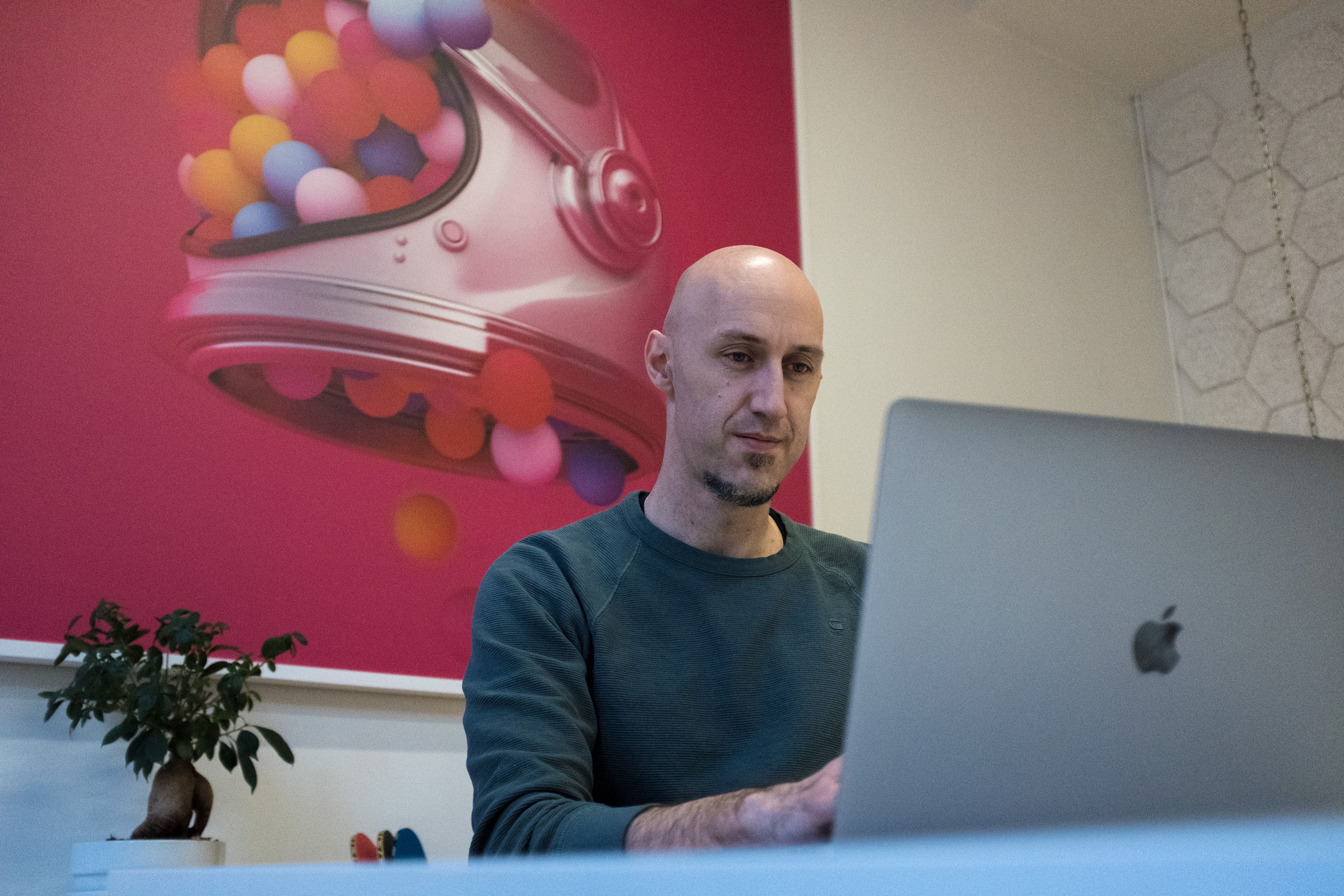
What did you learn there?
It’s where I discovered a lot of the limitations we place on ourselves in Spain: ‘my English isn’t good’, ‘people abroad are more competitive’ and ‘what if things don’t go well?’ All of these are silly fears: we’ve got the skills that are needed. And that’s something I have realized. Spanish professionals absolutely do have all the qualifications needed to compete effectively anywhere in the world, but we have to overcome a series of obstacles that derive from our own fears.
It was in Amsterdam that I realized the importance of the context that I was talking about earlier. The important thing is to have the right conditions to be able to do your job in the best way possible.
After Tribal DDB, you went to J. Walter Thompson. What was that like?
I did got there, but before that I worked as a freelancer for a year, working for different brands and agencies until late 2013. After that, I joined J. Walter Thompson as Head of Design / Digital Creative Director in order to bring some digital personality to a more classical advertising environment.
That was a great challenge: to build a team with a technological profile that could take the design and creativity of the agency to another level. That project enabled me to surround myself with some highly talented people, such as another CEU graduate, Agustín Soriano, and, after snapping up a few other people, we succeeded in positioning ourselves as a leading agency. Our biggest achievement came in 2016 with “The Next Rembrandt”, which received more than 80 awards at creative festivals, including fifteen Lions and two Grand Prix at Cannes, and I’m proud to have formed part of that.
‘IT’S VERY IMPORTANT TO HAVE PROJECTS OF YOUR OWN. THEY ENABLE YOU TO BUILD YOUR PERSONAL BRAND. THAT’S REALLY IMPORTANT FOR YOUR PROFESSIONAL DEVELOPMENT. THEY GIVE YOU STRENGTH AS THEY KEEP BRINGING YOU OUT OF YOUR COMFORT ZONE.’
Satisfy our curiosity. Which country is the best to live in?
Of the three countries I’ve been lucky enough to live in, I’d have to say Holland. In Spain, there’s great quality of life, great weather, a great mentality and it’s really healthy place, so, if you can find a niche for your professional development, it’s unbeatable.
But I place great value on diversity and on being open to other cultures and other ways of doing things.
And so, although New York is magical, the balance that you find in Amsterdam, the terrible weather aside, in the professional side of things, in work-life balance, the magic, the culture, the creative context – well, you feed off all that and it makes you better as a person and as a professional.
‘one of life’s lessons is realizing who you really want to be. In my case, I SAW THAT iT WASN’T SO MUCH ABOUT GETTING into cinema, but ABOUT USING my creative ability to tell stories.’
Over 19 years you’ve used your creativity in a lot of different areas: digital design, art direction, illustration, etc. Which do you prefer?
Since childhood, I’d always dreamt of emulating Steven Spielberg, and so I’d borrow cameras from friends and shoot loads of short films and animations that I’d be a bit embarrassed to see now. But that showed me the way: I wanted to learn how to make films. And that’s how I ended up studying Audiovisual Communication at CEU.
And this is where I learnt one of life’s lessons, about realizing who you really want to be. In my case, I saw that it wasn’t so much about getting into cinema but about using my creative ability to tell stories. Those stories could be in the form of a film, but could also be told through design, through illustration or through an interactive experience.
It’s not so much about the objective you’re chasing, but about how you get there and enjoying learning new things on the way.
So, setting up my own interactive design business straight after graduation in 1998, when the Internet was still a new concept for most people, when I only had a rudimentary idea about programming and the key concepts in design – well, that was a declaration of my principles.
And it is in that environment that you realize that you can do the same thing as if you were in charge of the latest Hollywood blockbuster. And now, almost 20 years later, I can see that I still use the same principles. It doesn’t matter if I’m designing a website, a digital product, an interactive experience, an illustration, an animated film or I’m simply in a branding or strategy session with a client – for me it’s like directing a film or telling a story. So, I’m not so interested in the discipline, but in the process.
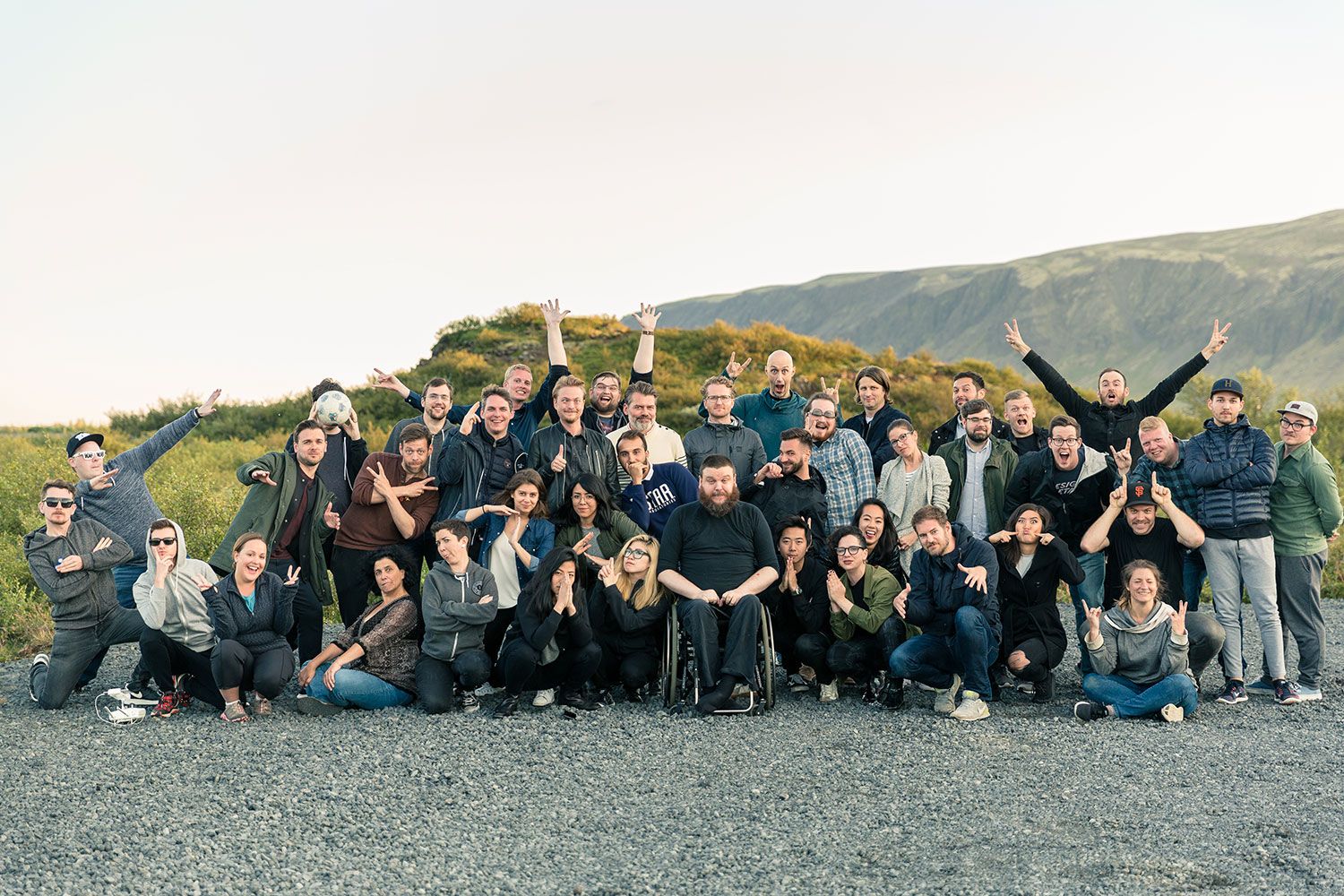
As you’ve just mentioned, you set up your own interactive design company and now you’ve also got your own projects which are separate from your role at Ueno. How important is it to have your own projects?
For a person who’s involved in creative work, only doing things directly related to your job is really limiting. There are always new things to do and learn.
I think you need to have projects like this. They can help you to learn new things (3D, photography, illustration) or to improve the skills you already have. In my case, I’ve done side-projects on illustration and design, I’ve written stuff, and given classes and talks.
‘SETTING UP YOUR OWN BUSINESS IS ONE OF THE MOST REWARDING and toughest THINGS YOU CAN DO. And we should all do it, in some way.’
It’s very important to do have projects of your own. They enable you to build your personal brand. That’s really important for your professional development. They also give you strength, as they keep bringing you out of your comfort zone. At the same time it’s satisfying to see a personal project, like my Flatguitars illustration project – which started out as an experiment in mixing one of my passions, music and guitars, with something that I wanted to learn and to improve my technique in making simple illustrations – receive recognition at a range of festivals and in different publications. It’s also rewarding to overcome your fears and be able to give a talk in English before 1500 people.
What value do you place on being entrepreneurial?
Setting up your own business project, whether on your own or with others, is one the most rewarding and toughest things you can do. And we should all do it, in some way: it could be a small side-project like writing a book, or designing the kit for a basketball team, or setting up a design studio with friends. It doesn’t matter what it is. What matters is that you give your creative self that stimulation that it always needs.
The list of brands you’ve worked with is very impressive: ING, Spotify, Samsung, Calvin Klein, Google, Heineken, Philips, BMW, Adidas, Facebook…
One of the things I’ve realized while working for leading brands is that, in the end, we’re all the same. They do have that aura of popularity around them and that perception does condition the way we act. But we all have the same problems and challenges.
In the end, it’s not so much about the brands you’re working with, but how you approach your work.
Every project is an opportunity and that opportunity comes if you’re designing the way in which we will consume news in the future, as we’re doing for Reuters right now, or if you’re designing the corporate identity of a small start-up. In the end, it’s our responsibility to make those projects memorable.
‘i’VE USED MY CEU EDUCATION NOT SO MUCH FOR A PARTICULAR ROLE, BUT RATHER IT’S GIVEN ME A SET OF SKILLS THAT I COULD THEN USE IN A THOUSAND DIFFERENT WAYS.’
And that’s something that I’m trying to instil at the agency. It’s true that, when you get an opportunity to work with a well-known brand, your first reaction is more positive than it would be otherwise. But there’s a way of thinking about that I’ve always tried to apply to my own work and that I want my team to buy into: there are no boring projects – it’s our responsibility to find the real challenge and turn it into an exciting opportunity.
Personally, my favourite clients are those who are as passionate as you are in the development of the project, trusting you to come up with something unique. It doesn’t make any difference what the brand is.
With another CEU graduate, Agustín Soriano, in a press release from JWT Amsterdam.
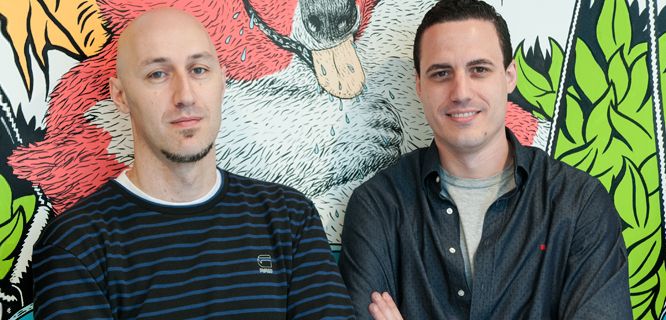
It’s been almost twenty years since you graduated at CEU. What do you most value about your time at the University?
I’ll always look back on my time at CEU with a smile. I met some great people, both lecturers and classmates. As I said before, some of them have been in the trenches with me for more than 10 years as business associates. I still have regular contact with many of them and we remain real friends.
I’m tremendously proud of the kind of people that my lecturers and classmates were and are. I admire their infectious desire to get out there and do things. I’m grateful to the staff and the institution for encouraging all that energy.
I look back with a lot of affection on the placements we did, when we were trying to see what our future careers might be like. I really enjoyed making short films and learning to tell stories, an experience which I’ve ended up using in many different ways during my career in design and advertising.
I’ve used my CEU education not so much for a particular role, but rather it’s given me a set of skills that I could then use in a thousand different ways. And in the end, that’s what it’s all about – things aren’t set in stone.
‘TODAY’S TECHNOLOGY CAN convey OUR CREATIONs easily to everyone, so if i were a student again, i’d focus my efforts on producing eye-catching personal projects.’
Let’s stay on the CEU theme. What advice would you give to current Advertising and Audiovisual Communication students about their future careers?
In the first place, I’d emphasize the obvious: hard work, an extreme sense of curiosity and no fear of making mistakes.
I’ll never tire of telling people that, if they have the opportunity (and if they don’t have one, to create it), they should spend time away from their familiar environment. It gives you new perspectives and it improves you in every way.
And we need to understand the context we’re in. In the world we live in now, with technology that can convey our creations easily to everyone, then, if I were a student again, I’d focus my efforts on producing eye-catching personal projects. So, if film, video art or animation was my thing, I’d film a lot of experimental stuff and put it up on Vimeo to try to make a name for myself. If design was what I was into, then I’d try to put together real or personal projects and then use platforms like Behance or Dribbble to put my name on the map.
The hardest part is getting things started and achieving that initial visibility. I’m not a blind believer in social networks, but I can see the power they have to move our careers forward.
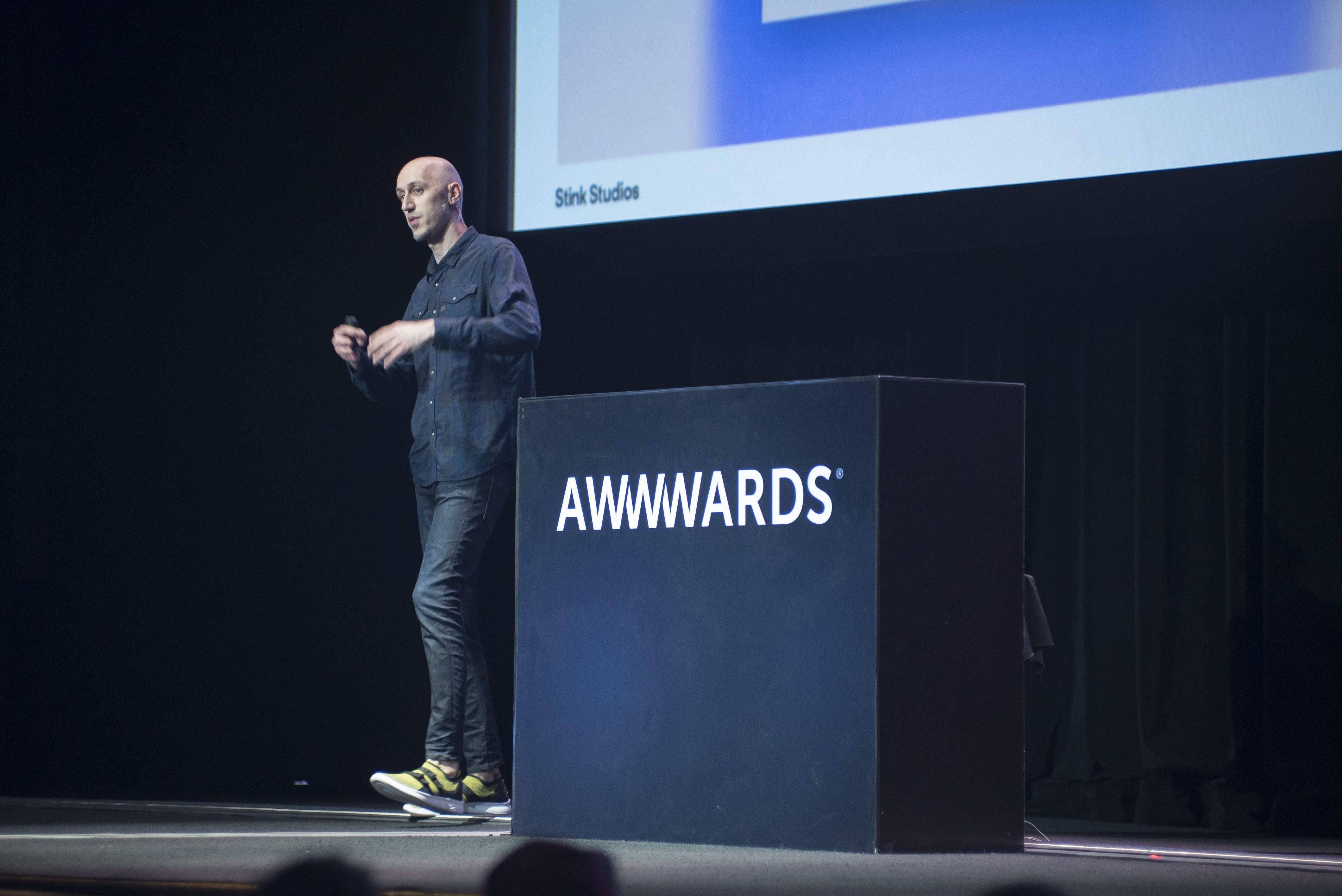
What about placements?
Of course. You have to keep an eye on those studios and agencies that you admire and then check when placements come available there. That usually happens in the summer and winter. To be selected, you need a good portfolio, with interesting work that shows ideas and technique. And that comes from that curiosity and hard work that I mentioned at the beginning.
The options are endless, such as The Kennedys at W+K in Amsterdam, Droga5 in New York, and there are even placements available where I work at Ueno… Is it easy to get in? No, quite the opposite, it’s very difficult, but real talent always finds a way. It’s now, when you’re at university, that you have to start to take steps towards a successful career, even if seems a long way off.
‘IT’S TREMENDOUSLY DIFFICULT TO PREDICT WHAT WILL HAPPEN IN JUST A FEW YEARS. what i am sure of is that creatvity and ideas will always lead the way.’
Where do you want to take your career next? Where do you see yourself in ten years?
At this point in my career, I’m still enthusiastic about my work and I want to enjoy it. I love my profession and, although it’s not always a bed of roses, it is rewarding in the end.
But it makes me a bit dizzy to imagine where I’ll be in ten years. I don’t know if I see myself doing the same thing I’m doing now, but I’m sure I’ll be doing something creative, maybe my own project, regarding design or something else, or maybe working in a studio or agency.
I see myself as a bit like an aging rock star, who’s still got it and can keep performing on stage. I would also really like to be able to share what I’ve learnt over the years with others through talks and teaching. I do that already sometimes, but I’d like to do more. Why not at CEU? (laughs)
Anyway, there’s still a lot to learn, share and enjoy. I’m still raring to go.
Any thoughts on what advertising is going to be like in the future?
Ten years ago, we were only just starting to use smartphones and social networks were becoming more important, but there wasn’t so much noise about them. There was a distinction between offline and online, there was no cloud computing, we didn’t talk about smart things, we didn’t think about the innovations to come in virtual reality, self-driving cars, cashier-free supermarkets, drones delivering packages, or data guiding our decisions.
Given all that, how can we know what advertising in the future will be like? It’s tremendously difficult to predict what will happen in just a few years. What I am sure of is that creativity and ideas will always lead the way and the context will decide what the best channel for those ideas will be, whether that’s through film or a complex symbiosis with technology.
Right now, I’m fascinated by the world of alternative realities, in the form of virtual reality technology, which will really show itself in the field of videogames and experiences, and also augmented and blended reality, which will inevitably form part of our lives.
Right now, it’s hard to imagine the future without falling into utopian or dystopian clichés from science fiction. So, I prefer to keep exploring and discovering what technology has to offer us.
David, thank you very much for your time.
You’re welcome.






